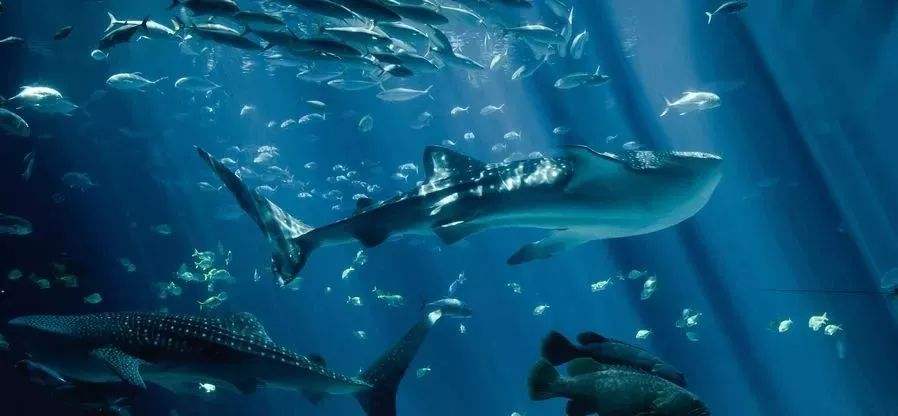Chinese Name: 上海海洋水族馆 Pronunciation: shàng hǎi hǎi yáng shuǐ zú guǎn
Building Time: 2001
Occupied Area: About 20,500 square meters
Suggested Visiting Hours: 2-3 Hours
Best Visiting Time: All year round
Address: No.1388 Lujiazui Ring Road, Pudong New Area, Shanghai
Building Function: It is a modern large-scale marine aquarium with world-class standards, which exhibits more than 450 species, over 12,000 rare fish and endangered rare creatures from five continents and four oceans.
| Tickets | Adult | Children ( under the height of 1.4 m, should be accompanied by an adult) |
| Admission Fee | 160 yuan | 110 yuan |
| Combo Ticket (Shanghai Ocean Aquarium and Shanghai Science and Technology Museum) | 185 yuan | |
| Combo Ticket (Shanghai Ocean Aquarium and 88-floor Sightseeing Hall of Jinmao Tower ) | 215 yuan | |
| Combo Ticket (Shanghai Ocean Aquarium and The Oriental Pearl TV Tower) | 320 yuan | |
| Combo Ticket (Shanghai Ocean Aquarium and Sightseeing Hall of Shanghai Tower) | 305 yuan | |
| Shanghai Ocean Aquarium | Peak Season (Summer Holidays(July & August), Chinese National Day Holiday, (Chinese New Year Holiday) |
Daily Operating Hours |
| Opening Hours | 9:00-21:00 | 9:00-18:00 |
| Ticket Office Opening Hours | 9:00-20:30 | 6:30-17:30 |
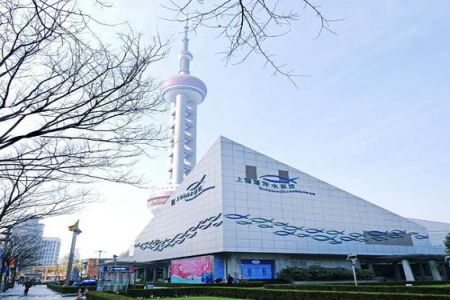
Shanghai Ocean Aquarium is a modern large-scale ocean aquarium with world-class standards. It is divided into nine exhibition zones: China Zone, South America (Amazon) Zone, Australia Zone, Africa Zone, Southeast Asia Zone , Cold Water Zone, Polar Zone, See and Shore, Deep Ocean Zone. More than 450 species, 12,000 rare fishes and endangered rare creatures from five continents and four oceans are exhibited here. The aquarium also has one of the longest undersea tunnels in the world, which is 155 meters long, endowing visitors with immersive feeling. The most distinctive creatures in the aquarium are the electric eel in South America, the sawfish and archerfish in Australia, the penguins in Antarctica, and the grassy sea dragon etc.
The layout of the Shanghai Ocean Aquarium building is like a pyramid. The whole construction consists of two buildings: the main building of the aquarium and the auxiliary building. The specific distribution of each floor of the main building is as follows: the first floor is endowed with a hall, a ticket office, a gift shop and a restaurant; the second floor is mainly distributed with six zones, which are Australia Zone, Africa Zone, Southeast Asia Zone , Cold Water Zone, Polar Zone, See and Shore; the third floor: Fossil Exhibition, Wulin Conference-Bionic Exhibition of Aquatic Organisms Survival Competition, SOS Shark Saving Exhibition, Exhibition Area of Rare Aquatic Organisms in Yangtze River Basin, China Zone, South America Zone and Australia Zone; the basement second floor is the main body of the aquarium and it includes Deep Ocean.
Except for the world's distinctive freshwater and marine life, the aquarium displays the world's rare species such as grassy sea dragon, ribbon sea dragon, archerfish, penguin, spotted seal, sand tiger shark, Chinese alligator, and Chinese sturgeon. In addition to displaying aquatic life from five continents and four oceans, there is also a lobby specially introducing the humanities and geographical environment of each continent.
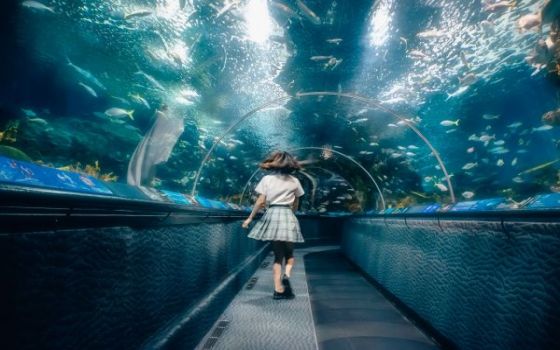
In September 2004, with the support of World Wild Fund Environmental Protection Organization, the exhibition of rare aquatic life in Yangtze River Basin was successfully held for the first time in the world.
In October 2008, the 7th International Aquarium Conference was successfully hosted in the aquarium.
In October 2009, the Shanghai Ocean Aquarium was rated as a national 4A level tourist attraction.
In May 2010, it was rewarded as the National Science Popularization Education Base in China.
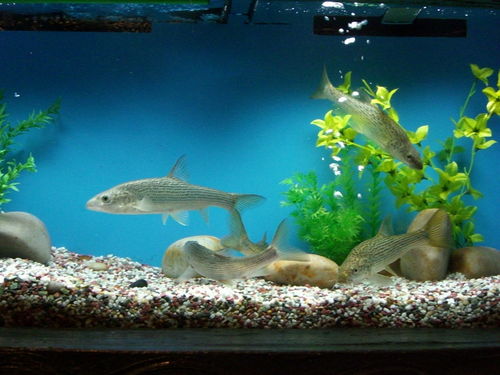
Shanghai Ocean Aquarium is the only aquarium in the world with independent exhibition zone of China and Yangtze River Basin to display aquatic life unique to China. Most of the creatures displayed are state-protected animals, including Chinese Sturgeon, Cochineal Fish, Yangtze Alligator and Chinese Giant Salamander.
South America has the largest variety and quantity of freshwater fish in the world. Arapaima gigas, as one of the largest freshwater scalelike bony fish, also thrives here. The Amazon River is the river with the widest drainage area in the world, which is inaccessible, covered with vast tropical jungle and full of mysterious colors. Besides, it has the largest amount of tropical fresh water species in the world.
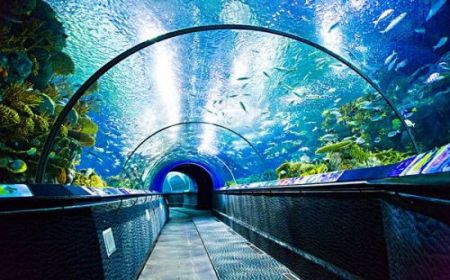
Although there are not many species of freshwater fish in Australia, most of the fishes are unusual that cannot be seen elsewhere in the world. Why is this happening? This is because the Australian mainland has been separated from other lands for about 50 million years, and the fishes living in Australia cannot crossbreed with the fishes from other continents. As a result, the freshwater fishes in Australia have always maintained its own uniqueness.
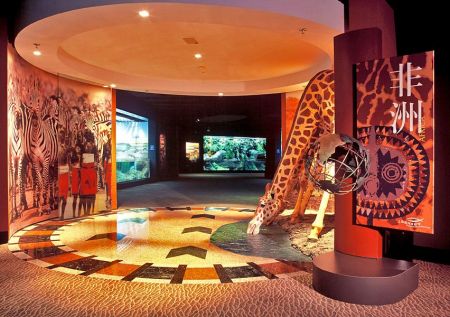
Africa has the Nile River, Congo River and other rivers, which contain many kinds of fishes, the most notable of which are cichlids in Lake Victoria, Lake Tanganyika and Lake Malawi. These lakes were formed 500 to 2 million years ago. At that time, a small number of fishes entering the lakes from rivers adapted to their new environment, and after numerous differentiation, they evolved into today's prosperity.
The tropical rain forest in Southeast Asia is one of the oldest tropical rain forests in the world. With high forest coverage, magnificent natural landscape and abundant biodiversity, it provides abundant food and ideal habitat for living creatures here. And there is a wide variety of large-scale Southeast Asian fish living here.
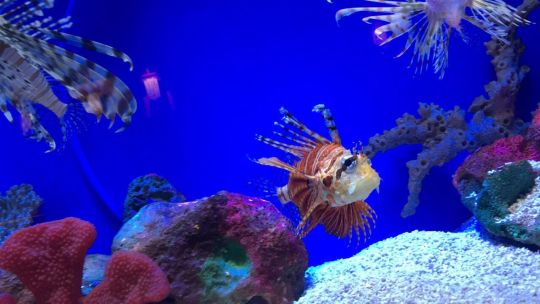
As the only exhibition tank in the Cold Water Zone - the Seal tank, its semi-arc acrylic cylinder structure is another unique design of the aquarium. Here you will have the chance to observe the lovely spotted seals from an underwater viewing environment.
When the roaring wind blows across the white mountains covered with snow, penguins are waiting for visitors, swaying in their "tuxedos" and showing their innocent gentlemanly demeanor.
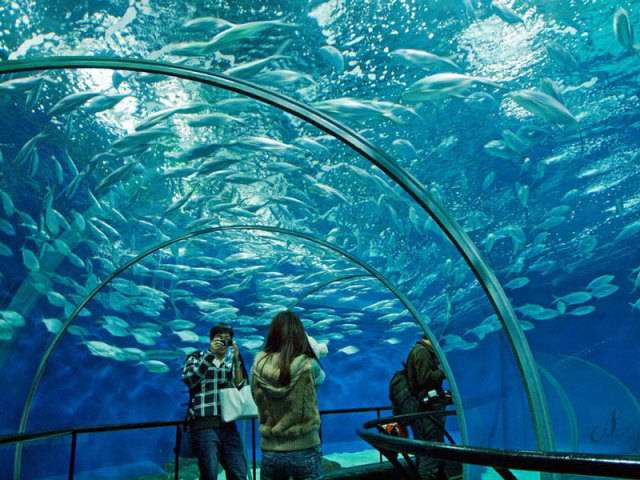
Once entering this exhibition area, visitors will be shocked by the diversity of marine life species, their richness of colors and peculiar living habits! Among these diversity species, you will find the Horseshoe crabs, which are known as "living fossils", coral reef slope fish that can change gender, grassy sea dragons, ribbon sea dragons and other creatures with different forms.
Visitors could descend into the depth of the ocean and enjoy the panoramic view offered by the underwater viewing tunnels. Beyond coastline, bay and coral reef, there is an open ocean where many pelagic predators roam.
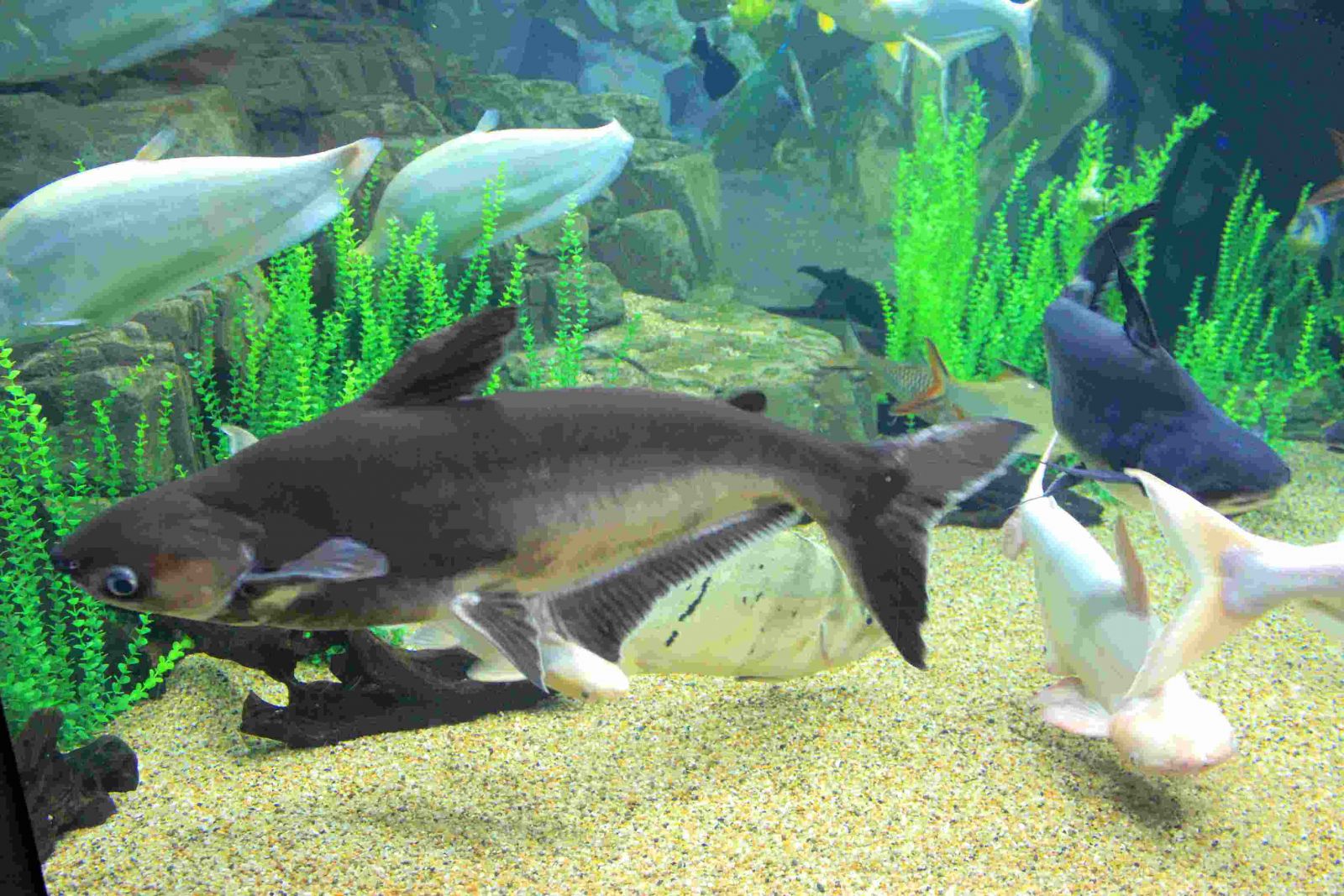
The special exhibition held in the Shanghai Ocean Aquarium has attracted the attention of the outside world since its opening. It is called a special exhibition because it creates a better platform for more tourists to understand marine knowledge and biology comprehensively and pertinently, and it is also a popular science and education park.
Fossil Exhibition→China Zone→South America Zone→Australia Zone→Africa Zone→Southeast Asia Zone→Cold water Zone→Polar Zone→Sea and Shore→Deep Ocean Zone→SOS-Save Our Sharks Exhibition.
Visitors can take city bus NO.81, 82, 85, 583, 774, 795, 798, 799, 870, 961, 971, 985, 992, 993, 996 to the Shanghai Ocean Aquarium.
Visitors can take Metro Line 2 and get off at the "Lujiazui" station. After five minutes’ walk, you will arrive at the Shanghai Ocean Aquarium.
Chinese: 请带我去上海海洋馆。English: Please take me to Shanghai Ocean Aquarium.
If you go to the Shanghai Ocean Aquarium from Shanghai Hongqiao International Airport, it will take about 46 minutes and cost about 90 yuan.
If you go to the Shanghai Ocean Aquarium from Shanghai Hongqiao International Airport, it will take about 49 minutes and cost about 149 yuan.
If you go to the Shanghai Ocean Aquarium from Shanghai Train Station, it will take about 23 minutes and cost about 27 yuan.
If you go to the Shanghai Ocean Aquarium from Shanghai South Train Station, it will take about 37 minutes and cost about 51 yuan.
